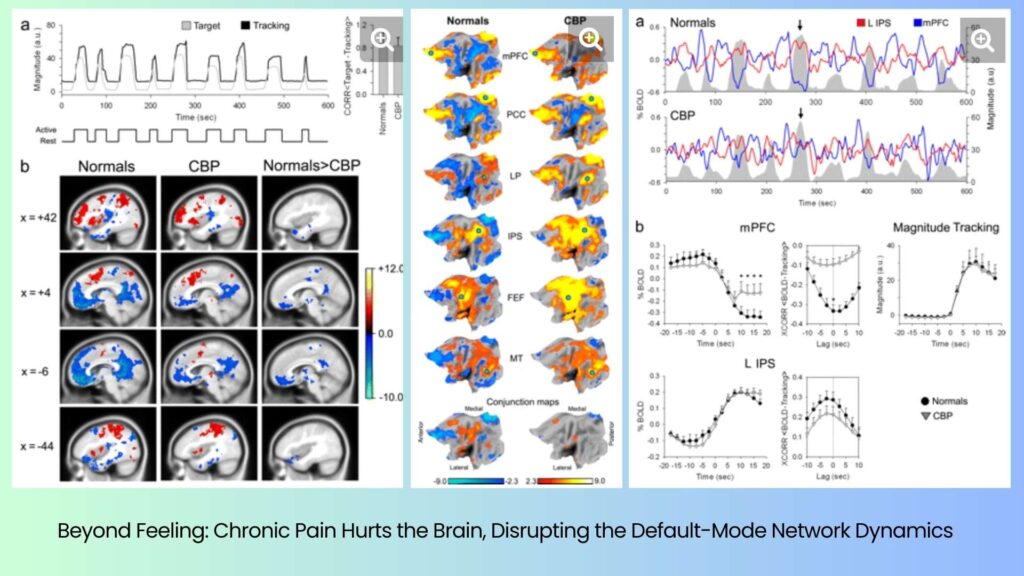Rewiring Pain Perception: A New Approach To Chronic Pain Management
Pain is not just a physical sensation; it is a neural experience deeply intertwined with our emotions, thoughts, and past encounters. While we often think of chronic pain as a simple response to injury or illness, neuroscience reveals that it is far more complex—shaped by the way our brain processes and interprets signals from the body.
Imagine pain as a fire alarm—designed to alert us to danger. If functioning correctly, it sounds only when there is an actual threat, such as a burn or an injury. However, in chronic pain conditions, the alarm keeps ringing even when the fire is gone, creating unnecessary distress. The nervous system, instead of shutting off the signal once healing has occurred, remains stuck in overdrive, amplifying pain even when no immediate physical harm exists.
Traditional pain management often treats pain as if it were a leaky faucet—attempting to stop the flow with painkillers, avoidance, or suppressive techniques. But pain behaves more like a looped track on a playlist—the more we focus on it or react with fear and frustration, the more it is reinforced. The brain replays the pain signal, strengthening the neural circuits associated with it, making the sensation feel more persistent over time.
This is why a new approach is needed—one that works with the brain’s natural ability to rewire itself rather than simply suppressing symptoms. Instead of viewing pain as an enemy to be fought, we must understand how the nervous system processes pain and learn how to shift our response to it. Science now shows that it is possible to weaken dysfunctional pain pathways and reprogram the brain’s pain-processing systems, ultimately leading to lasting relief and greater resilience.
The Neuroscience of Pain Perception
Pain is not just a response to tissue damage; it is a complex experience regulated by neural networks, emotions, and cognitive processing. When the brain detects pain, it immediately activates a protective mechanism, engaging multiple neural circuits to interpret and respond to the sensation.
The somatosensory cortex processes the location and intensity of the pain, while the limbic system and amygdala generate emotional reactions such as fear, anxiety, or distress. This interplay is crucial for survival, as it helps humans avoid harmful stimuli. However, in cases of chronic pain, these responses can become maladaptive, leading to heightened pain perception and prolonged suffering even in the absence of physical injury.
Research published in The Journal of Neuroscience indicates that early-life pain experiences can lead to increased functional connectivity between the somatosensory cortex and the medial prefrontal cortex, resulting in heightened pain sensitivity in adulthood.

Additionally, another study found that chronic pain alters brain function by affecting the default mode network (DMN), which includes the medial prefrontal cortex, contributing to both the emotional and cognitive dimensions of pain.
These findings highlight the critical role of the brain in shaping the pain experience, reinforcing the idea that pain is not just a physical sensation but a dynamic and adaptive process involving neural networks, emotional processing, and cognitive evaluation.

Understanding this complex interaction opens the door to innovative pain management approaches that go beyond traditional treatments, leveraging neuroplasticity, mindfulness, and cognitive interventions to rewire pain perception.
The Pitfall of Avoidance and Suppression
One of the biggest misconceptions about pain is that avoiding or suppressing it will make it go away. The reality is quite the opposite.
When we try to escape pain, the brain perceives it as a threat. This activates the fight-or-flight response, strengthening the neural pathways associated with pain perception. The more we resist, the stronger these connections become, reinforcing chronic pain loops.
A 2016 study in Pain Medicine found that individuals who engaged in avoidance behaviors experienced higher pain intensity and emotional distress over time.
This is because neurons that fire together, wire together—a fundamental principle of neuroplasticity. When we repeatedly react to pain with fear or avoidance, we strengthen the neural circuits responsible for pain perception. Over time, this creates a self-reinforcing cycle where pain persists even after the original injury has healed.
Breaking the Chronic Pain Cycle with Objective Neural Observation
The NeuroCellica Protocol introduces an approach that directly challenges the brain’s maladaptive pain responses. Instead of resisting pain, this method focuses on observing it neutrally, allowing the nervous system to recalibrate itself.
Case Studies: The NeuroCellica Protocol in Action for Chronic Pain
Case 1: Chronic Back Pain Relief Through Neural Observation
Patient Profile:
- Name: Girish Trivedi (45-year-old male)
- Condition: Chronic lower back pain for over 10 years
- Previous Treatments: Painkillers, physiotherapy, chiropractic care, and one failed surgery
Girish had been living with persistent lower back pain that significantly impacted his ability to work, exercise, and enjoy daily activities. Despite multiple interventions—including painkillers, muscle relaxants, and even spinal surgery—his pain remained unchanged. His doctors suggested further surgical interventions, but he wanted to explore alternative options before making such a decision.
After being introduced to the NeuroCellica Protocol, Girish agreed to undergo an 8-week structured program based on objective neural observation.
Progress Over Eight Weeks:
Week 1-2: Learning Awareness and Observation Techniques
Girish was initially skeptical about the idea of “observing” pain without trying to get rid of it. He was taught to simply acknowledge the pain without judgment—instead of labeling it as “bad” or reacting with frustration, he was encouraged to describe its characteristics neutrally (e.g., “a warm sensation in my lower back,” “a dull ache”).
Week 3-4: Engaging the Prefrontal Cortex Through Awareness
With practice, Girish noticed that his immediate emotional reaction to pain decreased. His brain was learning that pain was not a threat, reducing its activation of the fear-driven circuits. He was guided to observe the changes in pain intensity throughout the day without reacting emotionally.
Week 5-6: Measurable Reduction in Pain Sensitivity
By the fifth week, Girish reported a 30% reduction in pain intensity. His brain was regulating pain more effectively.
Week 7-8: Functional Improvements and Long-Term Impact
By the end of the 8-week program, Girish was able to walk longer distances, sleep more comfortably, and reduce his reliance on pain medications. His self-reported pain levels dropped by 40%, and he continued practicing neural observation techniques even after completing the program.
Case 2: Fibromyalgia and Mindfulness-Based Pain Rewiring for Chronic Pain Management
Patient Profile:
- Name: Sarah Walter (52-year-old female)
- Condition: Fibromyalgia, with widespread chronic pain for 15+ years
- Previous Treatments: Antidepressants, painkillers, lifestyle changes, and alternative therapies
Sarah had severe fibromyalgia, a condition characterized by widespread pain, fatigue, and heightened pain sensitivity. She had tried everything from antidepressants to acupuncture, but nothing provided lasting relief. She was told by doctors that her condition was incurable and that she would have to manage the symptoms indefinitely.
When she started the NeuroCellica Protocol, she had low expectations but was willing to try anything that might help.
Progress Over Twelve Weeks:
Week 1-4: Rewiring Pain Perception
Sarah was introduced to pain observation exercises where she was encouraged to watch the pain with curiosity rather than fear. This process disrupted the automatic pain-fear response that had been worsening her condition.
Week 5-8: Emotional Regulation and Stress Reduction
Sarah practiced breathwork and mindfulness techniques alongside neural observation. This helped her reduce stress hormones like cortisol, which are often linked to increased pain perception.
Week 9-12: Neuroplasticity in Action
After three months, Sarah’s pain intensity had decreased by 50%, and she reported feeling more in control of her condition. She no longer feared flare-ups because she had learned to engage her brain’s self-regulation mechanisms
Sarah continued practicing NeuroCellica techniques and, over the next six months, experienced even further improvements. She reduced her painkiller intake by 75%, and her overall quality of life improved dramatically.
Rewiring Chronic Pain Perception for Lasting Relief
Pain does not have to be a life sentence. Through the NeuroCellica Protocol, individuals can retrain their brain’s response to chronic pain, shifting from a state of fear and avoidance to adaptive self-regulation.
By embracing objective neural observation, we allow the nervous system to reset, weakening hyperactive pain pathways and restoring a sense of control over pain perception.
If your main focus is to get rid of pain, you might actually be making it worse. The brain works by reinforcing patterns, so when you constantly fear or resist pain, you strengthen the very pathways that keep it going. This can create a cycle where pain becomes more persistent, even when the original cause is no longer there.
The NeuroCellica Protocol offers a different approach—one that helps the brain rewire itself naturally. Instead of reacting to pain with frustration or fear, it encourages you to observe it neutrally, simply noticing the sensations without judgment. This shift in mindset helps calm the brain’s fear center (amygdala) and activates the prefrontal cortex, which plays a key role in regulating pain.
Over time, this process weakens the brain’s pain circuits, allowing your nervous system to reset and find balance. The key is to trust the brain’s ability to adapt—just like how cuts heal on their own, the nervous system can also recalibrate if given the right conditions. By learning to observe pain rather than fight it, you can reduce its intensity naturally, making way for lasting relief and a better quality of life.





